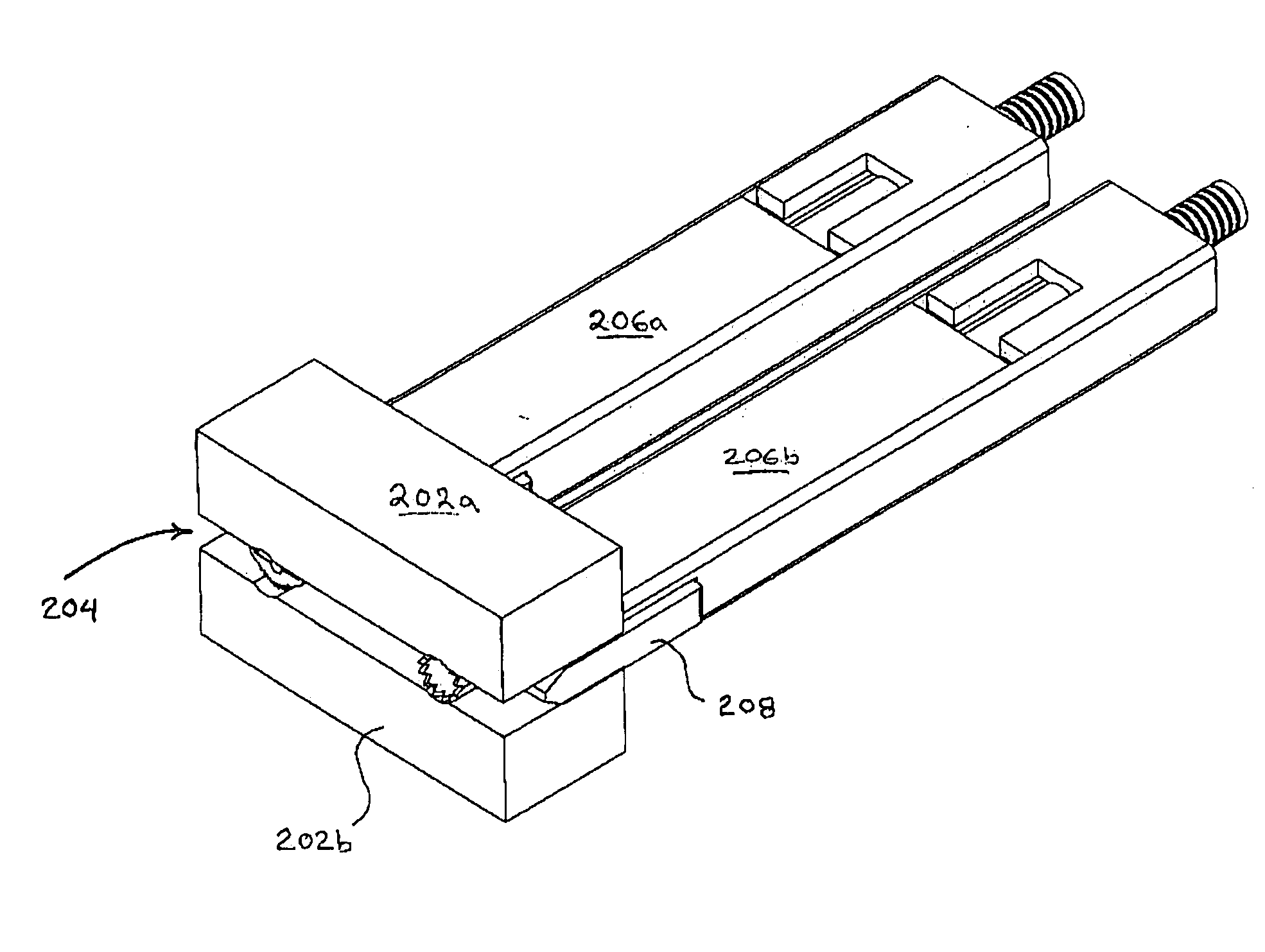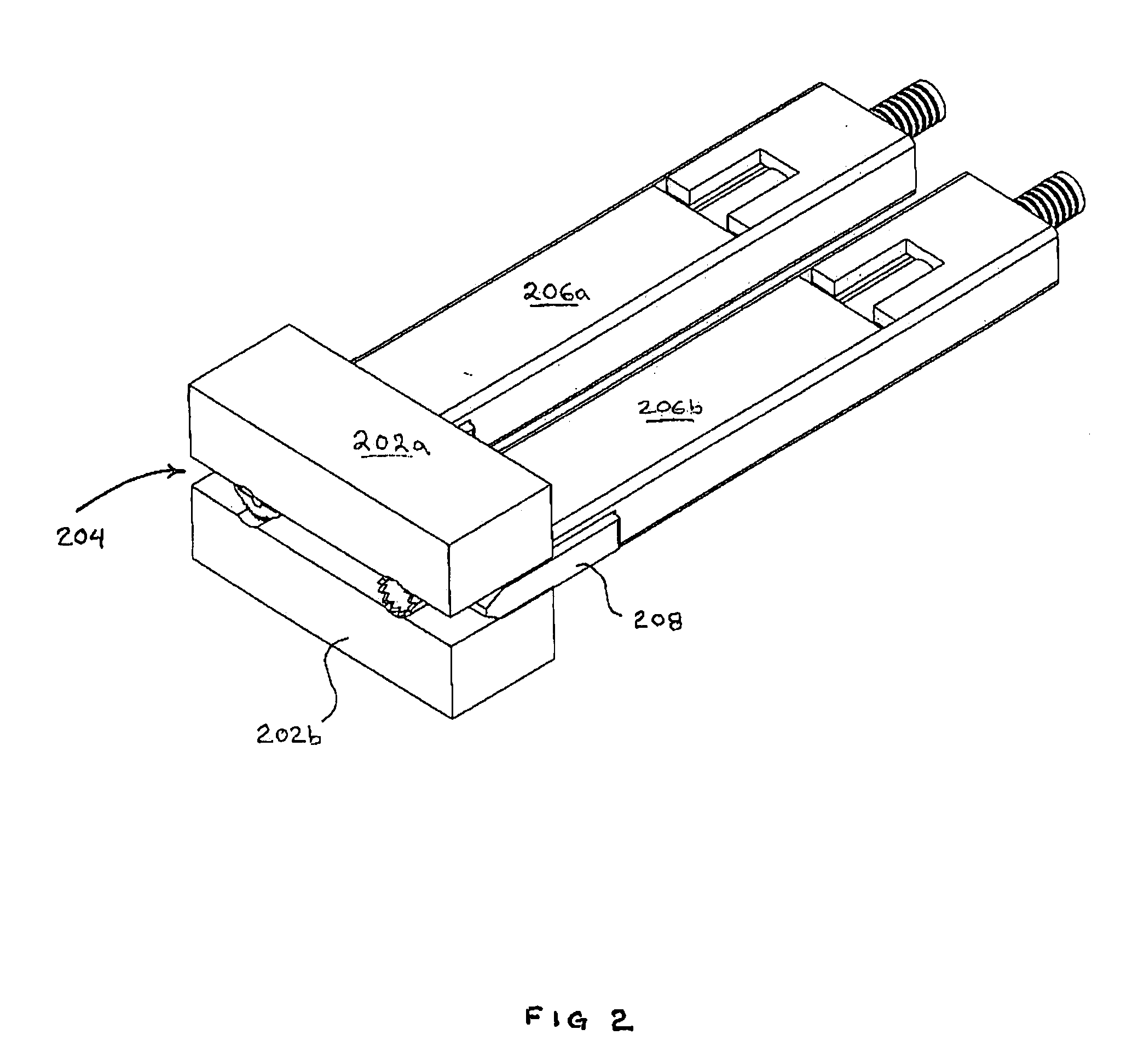Linearly expanding spine cage for enhanced spinal fusion
- Summary
- Abstract
- Description
- Claims
- Application Information
AI Technical Summary
Benefits of technology
Problems solved by technology
Method used
Image
Examples
Embodiment Construction
[0033]Referring to FIG. 2, vertebral segments 202a and 202b are shown with an 8 mm gap representing an average intervertebral space 204. The vertebral segments 202a and 202b are shown as blocks for clarity. A complete discectomy is performed prior to the insertion of the LEC.
[0034]As is well understood by one skilled in the art, the intervertebral disc occupying space 204 will be removed using standard techniques including rongeur, curettage, and endplate preparation to bleeding subchondral bone. The posterior longitudinal ligament will be divided to permit expansion of the intervertebral space.
[0035]The intervertebral space 204 will be distracted to 10 mm using a rotating spatula (Not shown. This is a device that looks like a wide screw driver that can be placed into the disc space horizontally and turned 90 degrees to separate the endplates).
[0036]Referring to FIG. 2 through FIG. 5, one or two 10 mm cage cannulas 206 are inserted between the vertebral segments 202a and 202b. It wi...
PUM
| Property | Measurement | Unit |
|---|---|---|
| Force | aaaaa | aaaaa |
| Angle | aaaaa | aaaaa |
| Surface area | aaaaa | aaaaa |
Abstract
Description
Claims
Application Information
 Login to View More
Login to View More - R&D
- Intellectual Property
- Life Sciences
- Materials
- Tech Scout
- Unparalleled Data Quality
- Higher Quality Content
- 60% Fewer Hallucinations
Browse by: Latest US Patents, China's latest patents, Technical Efficacy Thesaurus, Application Domain, Technology Topic, Popular Technical Reports.
© 2025 PatSnap. All rights reserved.Legal|Privacy policy|Modern Slavery Act Transparency Statement|Sitemap|About US| Contact US: help@patsnap.com



